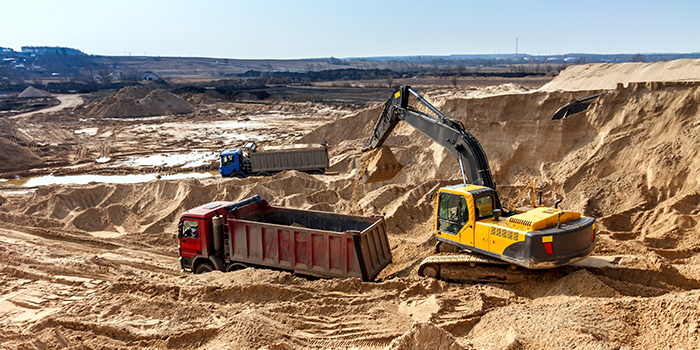
If an electrical supply is close by, for environmental reasons and to lower maintenance and operating costs, many mine sites prefer to use an electric-driven pump skid instead of a traditional diesel-engine-driven one. An electric-driven pump skid typically uses an AC motor and AC drive to set the flow rate of the dewatering pump. Typically the initial cost of an electric-driven skid will be higher, but the operating costs are significantly lower. The return on investment is very quick, often within months.
On more sophisticated mine-dewatering systems, typically on deep, open-pit mines where multiple, series-connected pump skids are used, Danfoss AC drives control the pump operating point based on the suction pressure resulting from the previous series-connected pump skid. This ensures the dewatering system operates at its optimum point.
The compact enclosures of VLT® and VACON® drives often enable the pump-skid manufacturer to minimize the size and cost of the skid. Their robust, high-ambient-temperature design ensures a reliable, long operational lifetime even when installed on a dewatering pump skid out in the open, on a hot, humid mine site with mining trucks kicking up dust as they pass by every few minutes. IP66 enclosures for a wide power range make it easy to install them on the pump skid, with a simple weather shield to provide shading. For higher powers, the back-channel cooling design in VLT drives often means that they can be installed on the pump skid in a simple weather-proofing enclosure without the need for any additional cooling fans or air conditioning system.
Slurry pumps are used extensively in many mine-processing facilities. To provide flexible control and optimize yields from equipment and the overall efficiency of the plant, drives are often used to control the pumps. For example, using an AC drive to control the flow of feed pumps to a Dense Medium Cyclone on a coal handling and preparation plant (CHPP) helps deliver greater yield.
A slurry pump is often a centrifugal pump. For centrifugal slurry pump applications, under normal operating conditions, drives will operate reliably if they have been selected based on what is typically referred to as a normal overload or normal duty rating.
However, normal operating conditions do not always exist on a mine site. Mains supply interruptions or emergency stop conditions can result in slurry pumps and pipelines being full of slurry when the pump stops. If the slurry is particularly dense, and downtime continues for some time, the dense material in the slurry settles to the bottom of the pump and pipeline, often making it difficult to restart.
It’s recognized and often specified by many consultants, engineering service providers and contractors that the best practice in choosing drives for slurry pumps is to select them based on an overload rating that at least ensures 150% motor torque for 30 seconds. Both VLT and VACON drives are suitably rated to ensure the reliability of all slurry pumps throughout your facility.